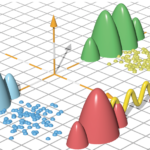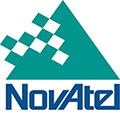Q: How important is GNSS observation weighting?
A: In the early days of GPS, most receivers tracked only as many satellites as were required to compute a position. This meant that observation weighting was not needed and not even possible when processing on the epoch-by-epoch level.
Q: How important is GNSS observation weighting?
A: In the early days of GPS, most receivers tracked only as many satellites as were required to compute a position. This meant that observation weighting was not needed and not even possible when processing on the epoch-by-epoch level.
Soon, though, receivers were capable of tracking all satellites “in view,” and instead of the four minimum pseudorange observations required for a three-dimensional position, five, six, or more pseudoranges could be available at each epoch. GNSS observation redundancy will increase further as GLONASS and Galileo approach their full constellations.
Inevitably, redundant observations are inconsistent. At first sight, this might seem a nuisance best avoided by selecting a suitable non-redundant subset of the observations to compute position and receiver clock bias — for example, the one yielding minimum GDOP. In reality, however, GDOP tells nothing about the actual errors of the observations, and the chosen subset may produce a larger position error than other subsets would. It is far better to exploit the inconsistencies using statistical methods such as least-squares (LS) estimation, Kalman filtering, and hypothesis testing. This increases the positioning precision, allows checking for failures, and reduces the probability of undetected gross errors.
However, exploiting the inconsistencies requires that the relative precision of each observation with respect to the other observations be known.
(For the rest of Dr. Andreas Wieser’s answer to this question, please download the complete article using the PDF link above.)
Q: What is the difference between ‘loose’, ‘tight’, ‘ultra-tight’ and ‘deep’ integration strategies for INS and GNSS?
A: The terms loose, tight, ultra-tight, and deep are used to describe the way in which information from an inertial navigation system (INS) and a GNSS receiver are fused in an integrated navigation system. More than a decade ago, R. L. Greenspan in his seminal work on INS/GPS integration (see citation in Further Readings section at the end of this Solution.) described the “loose” and “tight” integration architectures in the way they were understood at the time.
Over the years, however, a slight departure from these definitions has occurred. Unfortunately, this has led to some confusion especially because — as a review of recent literature on the subject indicates — an alternate consensus has emerged regarding the terms used to describe the various INS/GNSS architectures. Another source of confusion is the fact that some INS/GNSS architectures contain elements of the various fusion schemes such that they cannot be described simply as loose, tight, or deep.
In the following discussion, we present a synopsis of the various INS/GNSS fusion architectures and point out where some of the confusion lies.
(For the rest of Dr. Demoz Gebre-Egziabher’s answer to this question, please download the complete article using the PDF link above.)





